Connecticut Sotai Revisited
In NAJOM Volume 12 Number 33 (March 2005) I told the story of visiting Sotai teacher Peter Guy Thompson in his Connecticut clinic in the fall of 2004 and my subsequent study with him in Boston a few months later. Since that time I have returned to his clinic a number of times, on each occasion bringing with me family members for him to work on as I watched. I recently returned again to Hampton, CT where Peter practices from a clinic in the basement of his home. This time I went alone with three missions: I wanted to treat both Peter and his wife Akiko, I wanted to get a treatment myself, and I wanted to express to Peter my gratitude for teaching me his way of practicing Sotai. In the over five years since I studied with him in Boston I have had the chance to put into practice what he showed me, and on my own behalf and that of my patients I wanted to thank him. I believe that my practice follows Peter’s treatment flow more than that of anyone else I have studied with, though I do also incorporate elements of Meridian Therapy, Jeffrey Dann’s Koshi Balancing, and Dr. Manaka’s Yin-Yang Channel Balancing style as well. I had him schedule me at the end of the day so that I could give both him and Akiko treatments. After that I was invited to stay for a dinner of the most delicious Japanese food, and the three of us had great conversations for hours in Peter’s tiki bar room. It is a memory I will cherish.
In the same way that a foreign practice such as acupuncture is always inflected when it is introduced into another culture, so also do we all inflect the techniques we learn into our own respective styles of practice. Peter Thompson was always up front with me that what he does now in his practice is different in certain respects from the Sotai he learned in Japan, although the basic principles of Dr. Hashimoto’s Sotai are maintained. (See Peter’s excellent article on Sotai in NAJOM Volume 10, Number 27, March 2003) This sort of evolution is inevitable and is in no sense disrespectful to teachers under whom we studied. We choose what works for us, and also along the way we discover new approaches to treatment, ways we can integrate new elements into our style. In the case of Peter Thompson’s own approach, I would say that the way he has integrated shiatsu with Sotai movements is a key area of innovation, but it is certainly not the only one. He cleverly employs all sorts of tools in his treatments, none of which are mentioned in Hashimoto’s books.
So that readers might take away something of clinical value from this article, I would like to describe Peter’s use of shiatsu in his Sotai treatments; I find it such a valuable extension of Sotai. In reading Dr. Hashimoto’s book I often wondered how to use Sotai to treat the area between the scapulae. It is a tricky place to reach with Sotai moves. Although Peter’s way of combining shiatsu and Sotai can be used in many parts of the body, I will focus on describing its use in this upper back region because so many of our patients are challenged by tension and pain there. With the patient supine and with the knee nearest you bent so that the foot is flat on the table, push the knee away from you (you are positioned at the side of the patient) so that you can get your hand under the patient into the upper back region to search for tight-tender points (TTP). The patient is instructed to push the knee gently outward toward you while slowly exhaling; as the knee begins its movement, you use your finger strength to push up into the TTP you have found in the upper back. You allow the knee to move toward you a bit before offering resistance to the movement, completely stopping it; all the while you are continuing to hold pressure on the TTP. After approximately three seconds you give the patient the verbal command to relax, and at the same moment you let go of the pressure on the TTP. Although it is a simple technique it delivers remarkable results and is a wonderful addition to a Sotai practitioner’s repertoire.
In previous articles I have mentioned R. Buckminster Fuller and his work and its applicability to Oriental Medicine. Dr. Manaka wrote of Fuller’s ideas on the geometry of nature influencing the evolution of his own ideas about the eight extraordinary meridians. Fuller came up again in my expression of gratitude to Peter. Fuller often spoke of our universe being a precessional universe; he found it important to explain this principle in many of his talks. His entire professional life was a search for nature’s organizing principles, and precession was one of the key ones he uncovered. Precession in a physical sense describes the orbiting of one celestial body around another, e.g., the moon and the earth. If the earth and the moon both have gravitational fields, why don’t they simply collide? After all, gravity is an attractive force. Precession is the principle that describes how the moon orbits the earth at 90 degrees to the axis of attraction. Fuller said the same principle is evident in the waves that fan out in water after we drop a pebble in the pond. More metaphorically when a bee goes for nectar, it is simply attempting to secure food for the hive. That is the main intent. It seems to have no notion of the propagation of plants that results from its search for food. If we were to compare the value and impact of one bee getting its food to many species of plants getting propagated, it is obvious that the unintended effect of the bee’s actions are far more significant than the intended one. This is precession, and Fuller maintained this principle is in effect in everything we do.
So, in my talk with Peter I tried my best to say how I saw precession at work in his teaching me. When Peter agreed to give up his lunch hour six years ago in October, 2004 to give me a treatment (I mentioned on the phone I had studied Sotai with Stephen Brown and that got me the favor), he had no idea of me or the patients who in the future would come to me for help, and he had no idea I would hang around the East Coast for a few months so that I could study with him in a formal way in Boston. I am sure he could not have been aware of any of that. Nor was he aware of the students at OCOM and NCNM in Portland who would learn the basic Sotai principles from me and the patients they would go on to help. This is precession at work. As an aside I want to relate that one student from a year ago recently had a patient who has needed a cane for the last three years and has now been able to walk again without pain and without the need for her cane. Sotai was the key. We could follow a series of precessional linkages from this student’s treatment of her patient all the way back to Peter sitting down to listen to Hashimoto’s lecture for the first time in the 1970s. So much good has come of Peter teaching me, and none of it could have been anticipated in any sort of precise way. It goes without saying that this is equally true of the other teachers who have taken me under their wing.
What Peter spoke to me about while we chatted before dinner was the importance of structure and of the autonomic nervous system (ANS). I had the sense he was revisiting the key benefits of Sotai to make sure I had them in my bone marrow. I appreciated his effort and focus on the basic principles. There is great wisdom in the old adage: Zen mind, beginner’s mind. The inclusion of structure as part of the patient intake is a piece that is sorely lacking in North American OM education. Many schools include a class in structural diagnosis where orthopedic tests are learned, but they rarely follow through and teach students how to treat their patients based on these findings. It seems everything has to be passed through the zang-fu filter first before anyone will believe we are doing OM. Peter has helped me to develop that ability to use structural insights directly in treatment. The importance of the ANS focus is a point also emphasized by Junji Mizutani in his workshops, and it has proven its value many times over in practice. Patients relate to it when it is explained to them. They know they spend far too much time in the “fight or flight” mode and too little in the parasympathetic “rest and digest” mode.
At one point in our conversation Peter described himself as a simple farmer when compared to the brilliant minds in our community who have steeped themselves in the classics. I told him of a German folk saying: “The dumbest farmers harvest the biggest potatoes.” He seemed to appreciate the sentiment. Apropos this question of the role of theory, in an article on Dan Kenner’s website he tells of his apprenticeship in Japan with Dr. Tamotsu Mii after completing his acupuncture schooling. He says something interesting that escaped me the first time I read it. He said he was told that the role of theory is for the training of the intuition (chokkan).
In fact, it is considered that the purpose of traditional theory, Yin-Yang, Five Phases etc., rather than to be a description of phenomena, is to help the clinician in this process of developing perceptual faculties to develop a high level of perception and insight.
What Dan Kenner is saying here is crucial, and I think explains why Peter Thompson is such a good clinician. On my previous visit to his clinic he said he didn’t need theory nearly so much as he needed good eyes and hands. I know this to be true. Who would you rather be treated by—someone with great hands and highly developed sensitivity or someone who was a great scholar of the classics? For myself the answer is clear. I would want the person with the great hands to give me a treatment. There is a hierarchy and it is our senses and our intuition that are paramount in importance; they certainly trump theory, which is not to claim that the wonderful theories of OM are insignificant. They are precious gems.
In my conversation with Peter the great German literary figure Johann Wolfgang von Goethe came up. In addition to being a literary giant (he is referred to as the Shakespeare of the German language, not inappropriately) Goethe was also an amateur scientist who pioneered a holistic approach to scientific investigation that is now referred to as Goethean science. His way stressed the elevation of the senses. I told Peter that Goethe once wrote: “My thinking is a perception and my perception a thinking.” I believe this marriage of thought and senses is what we seek to achieve in OM, and this is close to a description of how Peter practices Sotai after thirty years in the “clinical trenches”. When he introduces movement into a patient’s body with gentle rocking, he is paying close attention with his vision and his touch. Is the movement received in the patient’s body in a balanced left-right manner, or is one side locked up and heavy relative to the other? If it is blocked somewhere, where precisely is it? This is so important and so few practitioners talk about it. Our patients are in bodies and they move all day long. We generally have them absolutely still on our treatment tables and hope to cure their woes, many of which are movement-related. We ought to ponder this. I credit Peter, Jeffrey Dann, and Stephen Brown for directing my thought along these lines.
I will close here with an apology for the rambling nature of this article. It is how my mind works these days, and I am not sure how well I can write a more linear piece anymore. My main purpose in the article has been to revisit a key moment in the development of my practice when I met Peter Thompson and to explain how so much evolved from there, but I also hope to stimulate interest in Sotai among those readers who have not yet experimented with it.
Courses By This Teacher
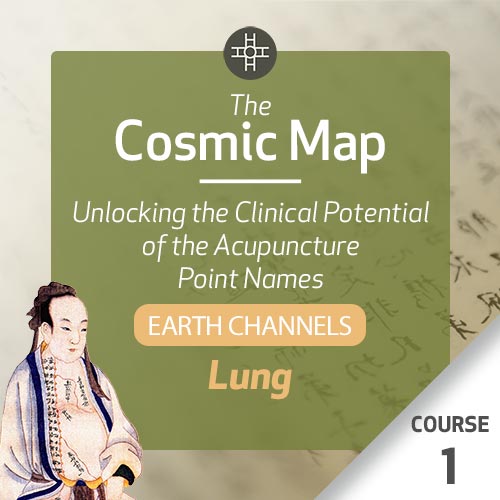
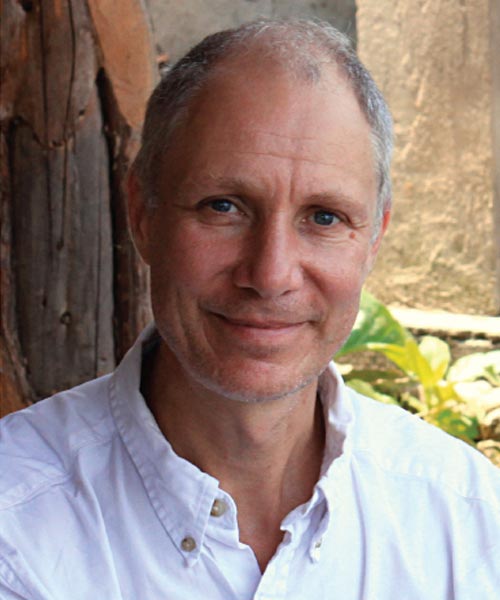
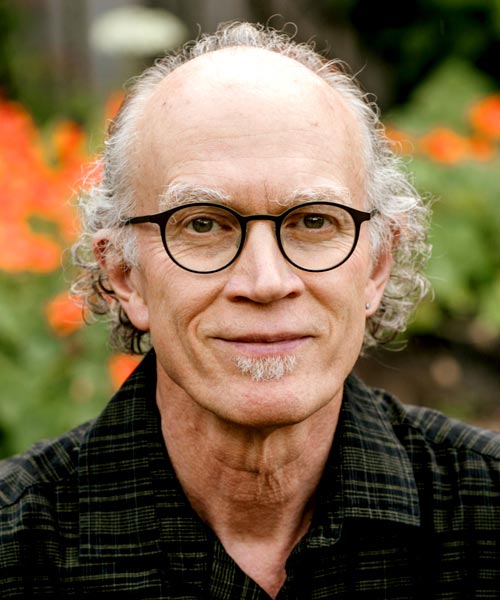
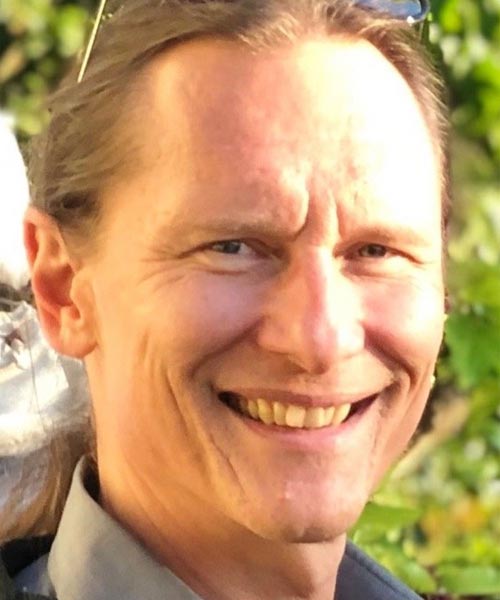
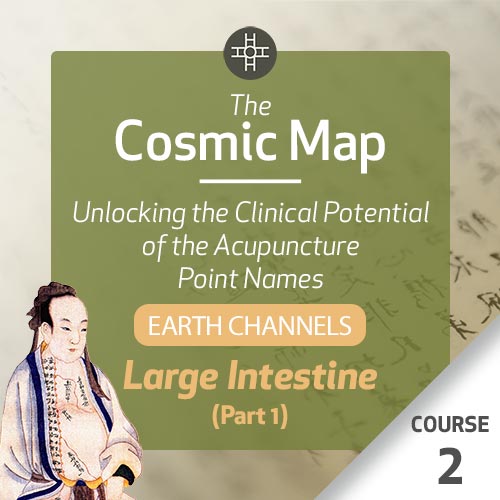



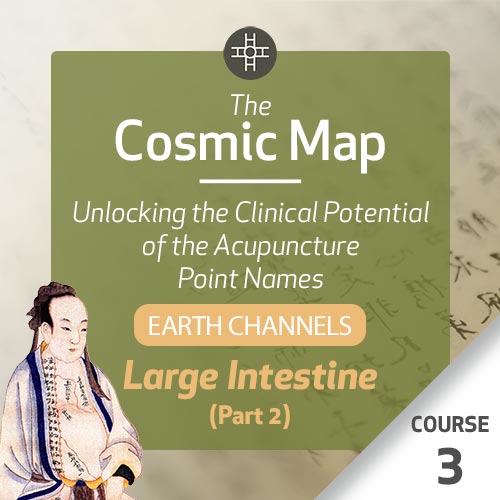



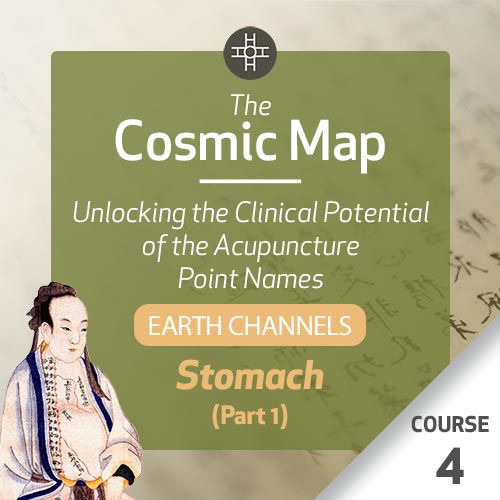



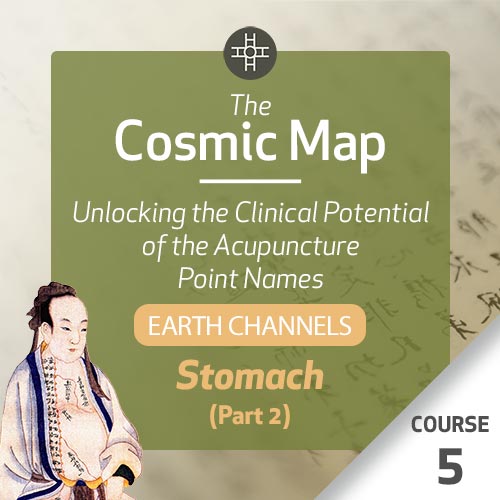



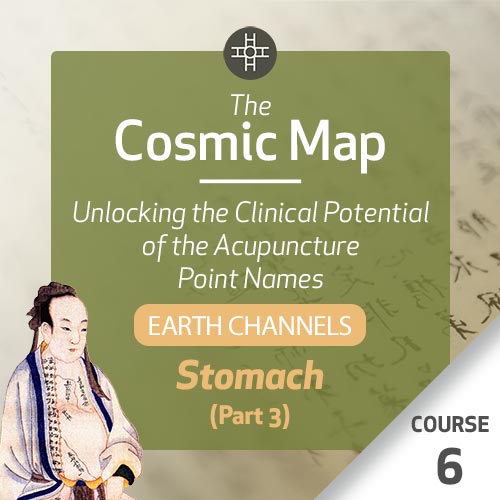



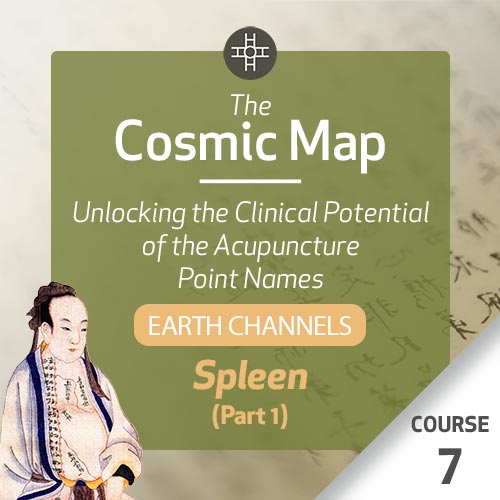



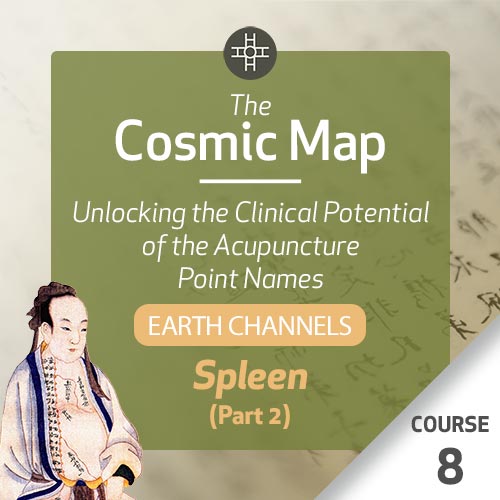



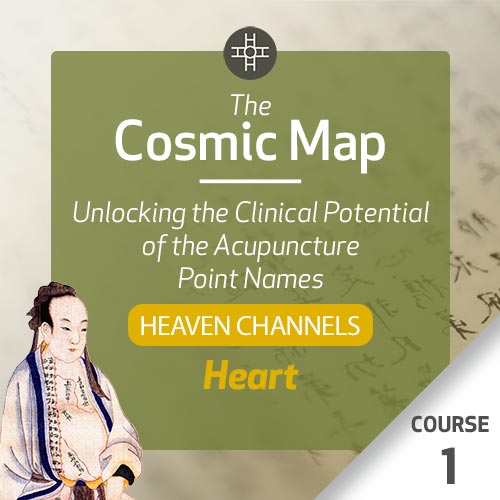



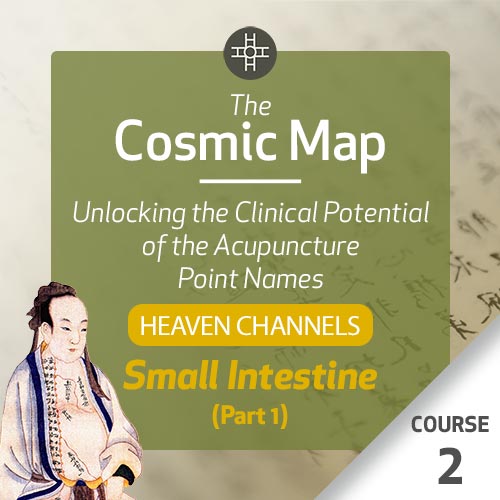



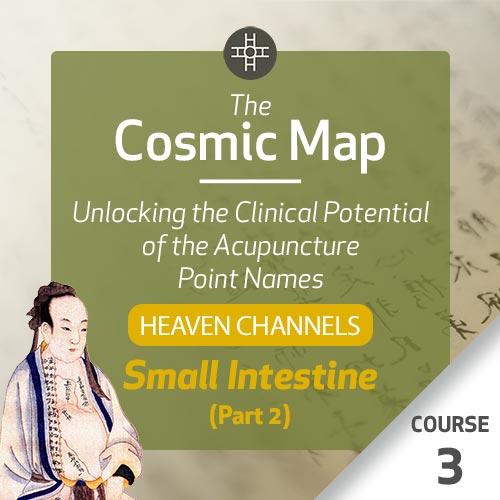



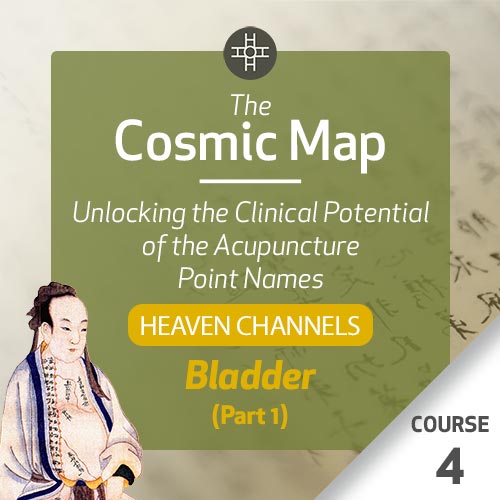



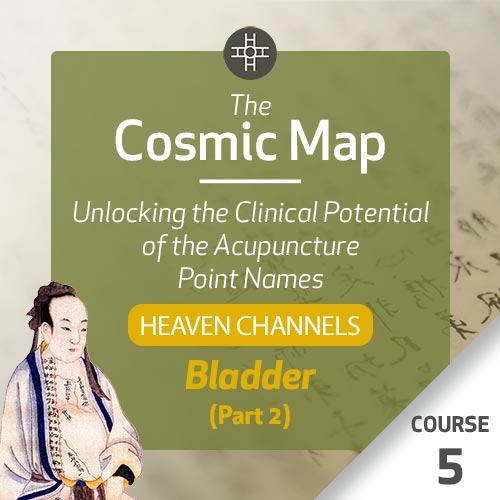



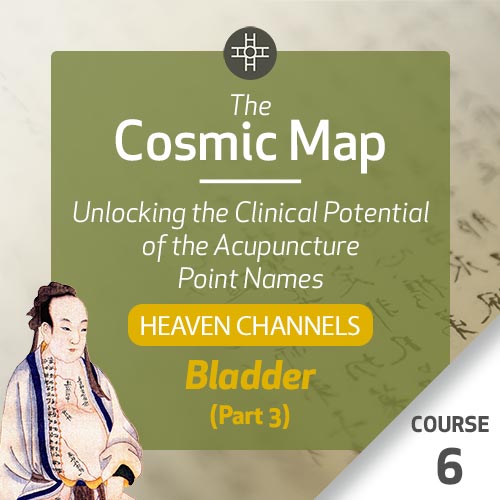



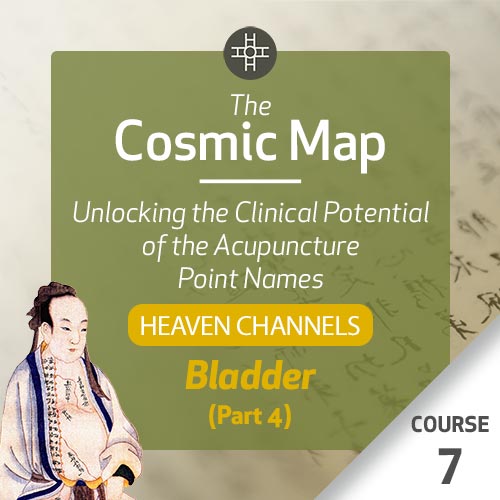



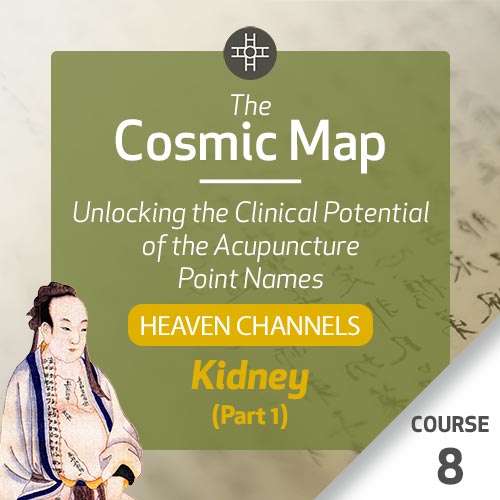



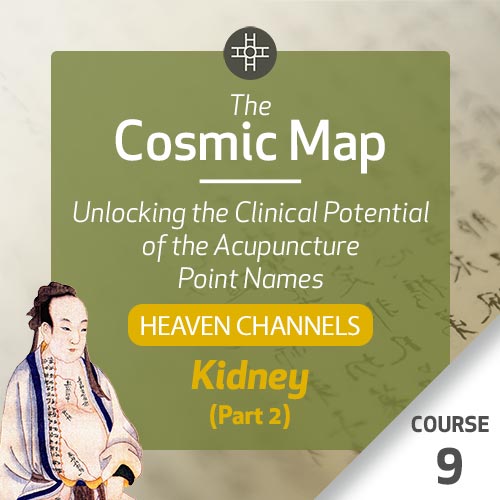



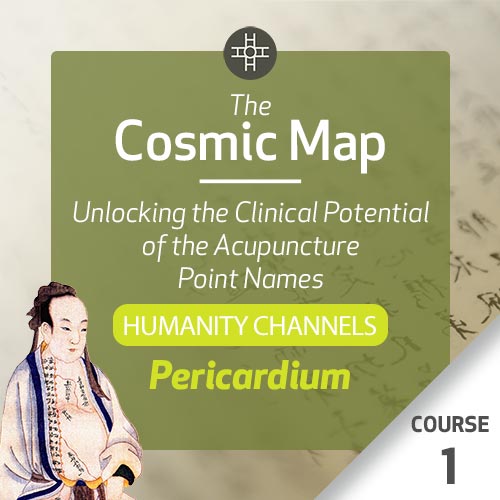



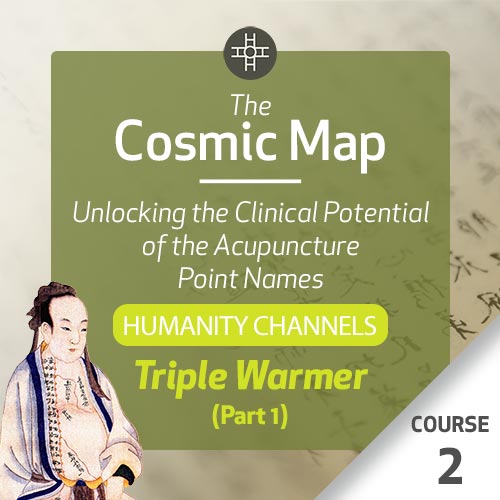



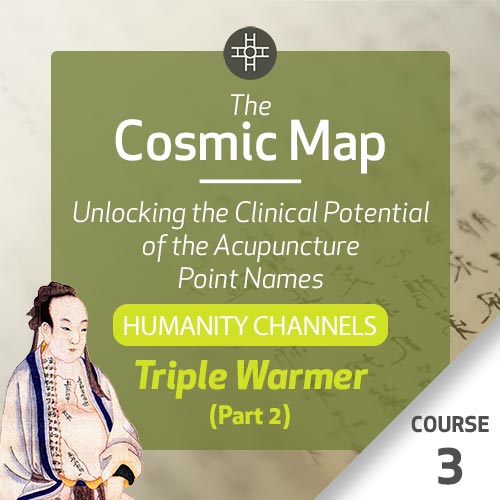



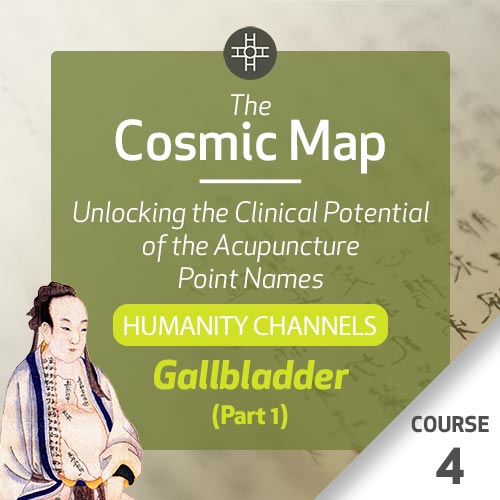



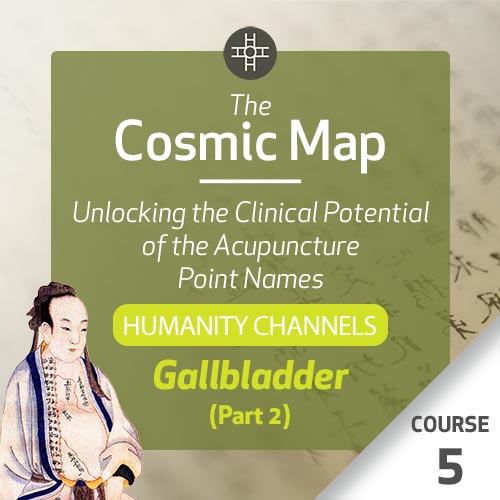



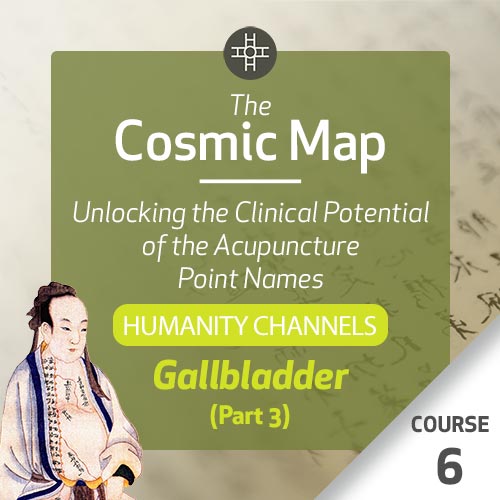



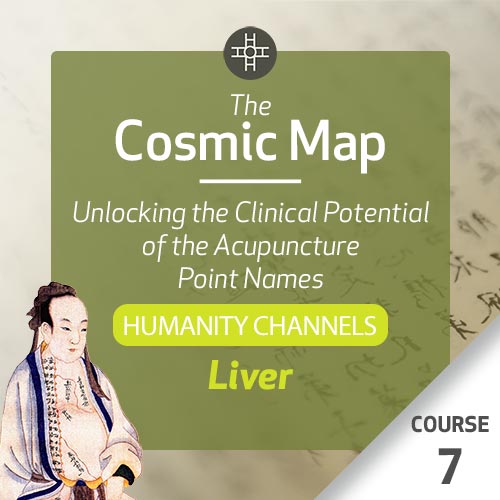



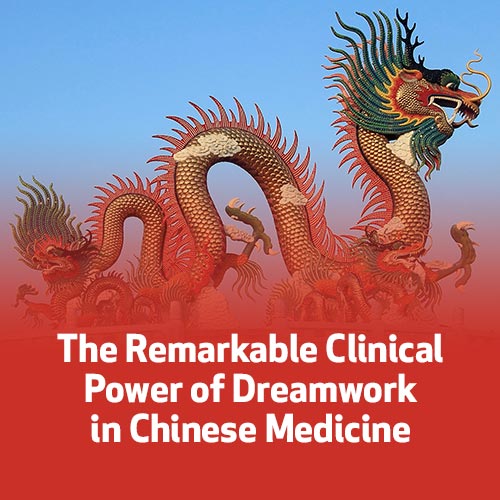
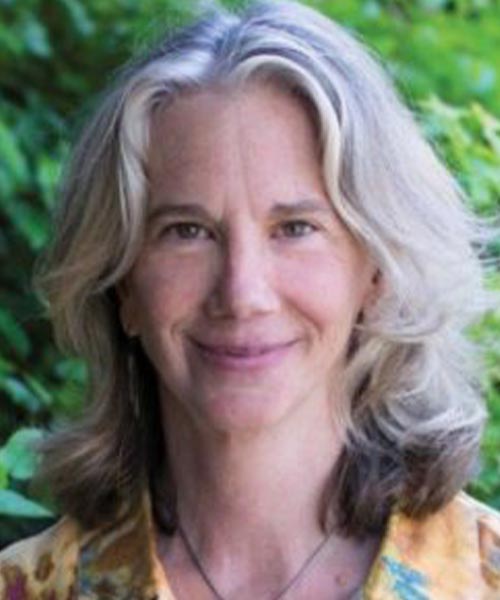



The Cosmic Map: Unlocking the Clinical Potential of the Acupuncture Point Names, Part 1: Earth Channels - Course 1
Lung
with Bob Quinn
See In StoreOverview
This course is designed to further the lifelong learner’s journey as they deepen their mastery of acupuncture point selections based on the profound information embedded in their classical names. Seasoned practitioners, students, and laypeople will all find value in this course.
Heiner Fruehauf will analyze the original meaning of each point name on the Lung channel in its multilayered complexity. The ancient acupuncture point names not only serve as mnemonic reminders about the location of each point, but also contain significant information revealing the unique energetic qualities and highly specific physiology and pathology of each point.
Heiner will tease out each layer of meaning through multiple translations. Relevant clinical context will be provided by the presentation of case examples or experience-based comments by senior acupuncturists Bob Quinn and Michael Berletich.
Heiner will share decades of research into the nuanced qualities of the acupuncture points, and instill in participants a tangible feel for their unique nature and energetic qualities.
With this base of knowledge, participants can stand on firm ground while being flexible in their ability to more deeply understand and select acupuncture points that can effectively treat the complex physical, mental/emotional and spiritual issues we encounter in our out-of-balance world.
Learning Objectives
- Elucidate the symbolism and story of the ancient acupuncture point names that serve as mnemonic reminders about their location, contain significant information, and reveal their unique energetic qualities and highly specific physiology and pathology.
- Describe the symbolic nature of the Lung channel and analyze the original meaning of the organ, meridian and point names in all their multilayered complexity including the cosmologic, energetic and physical viewpoints.
- Present the points of the Lung meridian so participants can understand how to hone their ability to select the most suitable points to effectively treat complex physical, mental/emotional and spiritual issues we encounter in our out-of-balance world.
- Discuss the physiologic actions, pathologic presentations and clinical applications of the Lung point represented by their name translations and their classical text indications with clinical and case examples.
Your Teachers

Heiner Fruehauf
Heiner Fruehauf is the Founding Professor of the College of Classical Chinese Medicine at National University of Natural Medicine (NUNM) in Portland, Oregon. As a practitioner, Dr. Fruehauf focuses on the complementary treatment of difficult and recalcitrant diseases, including cancer, chronic respiratory and digestive disorders, and inflammation of the nervous system.

Bob Quinn
Bob Quinn, DAOM, L.Ac. has been a full-time Associate Professor of Chinese Medicine at National University of Natural Medicine in Portland since 2009; before that, he taught and supervised at the Oregon College of Oriental Medicine. He first entered acupuncture practice in 1998 with a master’s degree from OCOM, and later returned to earn his doctoral degree in Chinese medicine in 2008.

Michael Berletich
Dr. Michael Berletich has been teaching for over 30 years. He received his Masters in Chinese Medicine (2005) and his clinical Doctorate in Chinese medicine (2016) from OCOM. He's worked the past 23 years as Professor, Clinician, Department Chair and Dean. He also maintains a busy private practice.
Categories
Tags
The Cosmic Map: Unlocking the Clinical Potential of the Acupuncture Point Names, Part 1: Earth Channels - Course 2
Large Intestine Part 1
with Bob Quinn
See In StoreOverview
This course is designed to further the lifelong learners’ journey as they deepen their mastery of acupuncture point selections based on the profound information embedded in their classical names. Seasoned practitioners, students, and laypeople will all find value in this course.
Heiner Fruehauf will analyze the original meaning of each point name on the Large Intestine channel in its multilayered complexity. The ancient acupuncture point names not only serve as mnemonic reminders about the location of each point, but also contain significant information revealing the unique energetic qualities and highly specific physiology and pathology of each point.
Heiner will tease out each layer of meaning through multiple translations. Relevant clinical context will be provided by the presentation of case examples or experience-based comments by senior acupuncturists Bob Quinn and Michael Berletich.
Heiner will share decades of research into the nuanced qualities of the acupuncture points, and instill in participants a tangible feel for their unique nature and energetic qualities.
With this base of knowledge, participants can stand on firm ground while being flexible in their ability to more deeply understand and select acupuncture points that can effectively treat the complex physical, mental/emotional and spiritual issues we encounter in our out-of-balance world.
Learning Objectives
- Present Large Intestine points so participants can understand how to hone their ability to select the most suitable points to effectively treat complex physical, mental/emotional and spiritual issues we encounter in our out-of-balance world.
- Discuss the physiologic actions, pathologic presentations and clinical applications of the Large Intestine point represented by their name translations and their classical text indications with clinical and case examples
- Elucidate the symbolism and story of the ancient acupuncture point names that serve as mnemonic reminders about their location, contain significant information, and reveal their unique energetic qualities and highly specific physiology and pathology
- Describe the symbolic nature of the Large Intestine channel and analyze the original meaning of the organ, meridian and point names in all their multilayered complexity including the cosmologic, energetic and physical viewpoints
Your Teachers

Bob Quinn
Bob Quinn, DAOM, L.Ac. has been a full-time Associate Professor of Chinese Medicine at National University of Natural Medicine in Portland since 2009; before that, he taught and supervised at the Oregon College of Oriental Medicine. He first entered acupuncture practice in 1998 with a master’s degree from OCOM, and later returned to earn his doctoral degree in Chinese medicine in 2008.

Heiner Fruehauf
Heiner Fruehauf is the Founding Professor of the College of Classical Chinese Medicine at National University of Natural Medicine (NUNM) in Portland, Oregon. As a practitioner, Dr. Fruehauf focuses on the complementary treatment of difficult and recalcitrant diseases, including cancer, chronic respiratory and digestive disorders, and inflammation of the nervous system.

Michael Berletich
Dr. Michael Berletich has been teaching for over 30 years. He received his Masters in Chinese Medicine (2005) and his clinical Doctorate in Chinese medicine (2016) from OCOM. He's worked the past 23 years as Professor, Clinician, Department Chair and Dean. He also maintains a busy private practice.
Categories
Tags
The Cosmic Map: Unlocking the Clinical Potential of the Acupuncture Point Names, Part 1: Earth Channels - Course 3
Large Intestine Part 2
with Bob Quinn
See In StoreOverview
This course is designed to further the lifelong learners’ journey as they deepen their mastery of acupuncture point selections based on the profound information embedded in their classical names. Seasoned practitioners, students, and laypeople will all find value in this course.
Heiner Fruehauf will analyze the original meaning of each point name on the Large Intestine channel in its multilayered complexity. The ancient acupuncture point names not only serve as mnemonic reminders about the location of each point, but also contain significant information revealing the unique energetic qualities and highly specific physiology and pathology of each point.
Heiner will tease out each layer of meaning through multiple translations. Relevant clinical context will be provided by the presentation of case examples or experience-based comments by senior acupuncturists Bob Quinn and Michael Berletich.
Heiner will share decades of research into the nuanced qualities of the acupuncture points, and instill in participants a tangible feel for their unique nature and energetic qualities.
With this base of knowledge, participants can stand on firm ground while being flexible in their ability to more deeply understand and select acupuncture points that can effectively treat the complex physical, mental/emotional and spiritual issues we encounter in our out-of-balance world.
Learning Objectives
- Discuss the physiologic actions, pathologic presentations and clinical applications of the Large Intestine point represented by their name translations and their classical text indications with clinical and case examples
- Present Large Intestine points so participants can understand how to hone their ability to select the most suitable points to effectively treat complex physical, mental/emotional and spiritual issues we encounter in our out-of-balance world.
- Elucidate the symbolism and story of the ancient acupuncture point names that serve as mnemonic reminders about their location, contain significant information, and reveal their unique energetic qualities and highly specific physiology and pathology
- Describe the symbolic nature of the Large Intestine channel and analyze the original meaning of the organ, meridian and point names in all their multilayered complexity including the cosmologic, energetic and physical viewpoints
Your Teachers

Michael Berletich
Dr. Michael Berletich has been teaching for over 30 years. He received his Masters in Chinese Medicine (2005) and his clinical Doctorate in Chinese medicine (2016) from OCOM. He's worked the past 23 years as Professor, Clinician, Department Chair and Dean. He also maintains a busy private practice.

Bob Quinn
Bob Quinn, DAOM, L.Ac. has been a full-time Associate Professor of Chinese Medicine at National University of Natural Medicine in Portland since 2009; before that, he taught and supervised at the Oregon College of Oriental Medicine. He first entered acupuncture practice in 1998 with a master’s degree from OCOM, and later returned to earn his doctoral degree in Chinese medicine in 2008.

Heiner Fruehauf
Heiner Fruehauf is the Founding Professor of the College of Classical Chinese Medicine at National University of Natural Medicine (NUNM) in Portland, Oregon. As a practitioner, Dr. Fruehauf focuses on the complementary treatment of difficult and recalcitrant diseases, including cancer, chronic respiratory and digestive disorders, and inflammation of the nervous system.
Categories
Tags
The Cosmic Map: Unlocking the Clinical Potential of the Acupuncture Point Names, Part 1: Earth Channels - Course 4
Stomach Part 1
with Bob Quinn
See In StoreOverview
This course is designed to further the lifelong learner’s journey as they deepen their mastery of acupuncture point selections based on the profound information embedded in their classical names. Seasoned practitioners, students, and laypeople will all find value in this course.
Heiner Fruehauf will analyze the original meaning of each point name on the Stomach channel in its multilayered complexity. The ancient acupuncture point names not only serve as mnemonic reminders about the location of each point, but also contain significant information revealing the unique energetic qualities and highly specific physiology and pathology of each point.
Heiner will tease out each layer of meaning through multiple translations. Relevant clinical context will be provided by the presentation of case examples or experience-based comments by senior acupuncturists Bob Quinn and Michael Berletich.
Heiner will share decades of research into the nuanced qualities of the acupuncture points, and instill in participants a tangible feel for their unique nature and energetic qualities.
With this base of knowledge, participants can stand on firm ground while being flexible in their ability to more deeply understand and select acupuncture points that can effectively treat the complex physical, mental/emotional and spiritual issues we encounter in our out-of-balance world.
Learning Objectives
- Present Stomach points so participants can understand how to hone their ability to select the most suitable points to effectively treat complex physical, mental/emotional and spiritual issues we encounter in our out-of-balance world.
- Discuss the physiologic actions, pathologic presentations and clinical applications of the Stomach points represented by their name translations and their classical text indications with clinical and case examples
- Describe the symbolic nature of the Stomach channel and analyze the original meaning of the organ, meridian and point names in all their multilayered complexity including the cosmologic, energetic and physical viewpoints
- Elucidate the symbolism and story of the ancient acupuncture point names that serve as mnemonic reminders about their location, contain significant information, and reveal their unique energetic qualities and highly specific physiology and pathology
Your Teachers

Michael Berletich
Dr. Michael Berletich has been teaching for over 30 years. He received his Masters in Chinese Medicine (2005) and his clinical Doctorate in Chinese medicine (2016) from OCOM. He's worked the past 23 years as Professor, Clinician, Department Chair and Dean. He also maintains a busy private practice.

Heiner Fruehauf
Heiner Fruehauf is the Founding Professor of the College of Classical Chinese Medicine at National University of Natural Medicine (NUNM) in Portland, Oregon. As a practitioner, Dr. Fruehauf focuses on the complementary treatment of difficult and recalcitrant diseases, including cancer, chronic respiratory and digestive disorders, and inflammation of the nervous system.

Bob Quinn
Bob Quinn, DAOM, L.Ac. has been a full-time Associate Professor of Chinese Medicine at National University of Natural Medicine in Portland since 2009; before that, he taught and supervised at the Oregon College of Oriental Medicine. He first entered acupuncture practice in 1998 with a master’s degree from OCOM, and later returned to earn his doctoral degree in Chinese medicine in 2008.
Categories
Tags
The Cosmic Map: Unlocking the Clinical Potential of the Acupuncture Point Names, Part 1: Earth Channels - Course 5
Stomach Part 2
with Bob Quinn
See In StoreOverview
This course is designed to further the lifelong learner’s journey as they deepen their mastery of acupuncture point selections based on the profound information embedded in their classical names. Seasoned practitioners, students, and laypeople will all find value in this course.
Heiner Fruehauf will analyze the original meaning of each point name on the Stomach channel in its multilayered complexity. The ancient acupuncture point names not only serve as mnemonic reminders about the location of each point, but also contain significant information revealing the unique energetic qualities and highly specific physiology and pathology of each point.
Heiner will tease out each layer of meaning through multiple translations. Relevant clinical context will be provided by the presentation of case examples or experience-based comments by senior acupuncturists Bob Quinn and Michael Berletich.
Heiner will share decades of research into the nuanced qualities of the acupuncture points, and instill in participants a tangible feel for their unique nature and energetic qualities.
With this base of knowledge, participants can stand on firm ground while being flexible in their ability to more deeply understand and select acupuncture points that can effectively treat the complex physical, mental/emotional and spiritual issues we encounter in our out-of-balance world.
Learning Objectives
- Present Stomach points so participants can understand how to hone their ability to select the most suitable points to effectively treat complex physical, mental/emotional and spiritual issues we encounter in our out-of-balance world.
- Elucidate the symbolism and story of the ancient acupuncture point names that serve as mnemonic reminders about their location, contain significant information, and reveal their unique energetic qualities and highly specific physiology and pathology.
- Discuss the physiologic actions, pathologic presentations and clinical applications of the Stomach points represented by their name translations and their classical text indications with clinical and case examples.
- Describe the symbolic nature of the Stomach channel and analyze the original meaning of the organ, meridian and point names in all their multilayered complexity including the cosmologic, energetic and physical viewpoints.
Your Teachers

Bob Quinn
Bob Quinn, DAOM, L.Ac. has been a full-time Associate Professor of Chinese Medicine at National University of Natural Medicine in Portland since 2009; before that, he taught and supervised at the Oregon College of Oriental Medicine. He first entered acupuncture practice in 1998 with a master’s degree from OCOM, and later returned to earn his doctoral degree in Chinese medicine in 2008.

Michael Berletich
Dr. Michael Berletich has been teaching for over 30 years. He received his Masters in Chinese Medicine (2005) and his clinical Doctorate in Chinese medicine (2016) from OCOM. He's worked the past 23 years as Professor, Clinician, Department Chair and Dean. He also maintains a busy private practice.

Heiner Fruehauf
Heiner Fruehauf is the Founding Professor of the College of Classical Chinese Medicine at National University of Natural Medicine (NUNM) in Portland, Oregon. As a practitioner, Dr. Fruehauf focuses on the complementary treatment of difficult and recalcitrant diseases, including cancer, chronic respiratory and digestive disorders, and inflammation of the nervous system.
Categories
Tags
The Cosmic Map: Unlocking the Clinical Potential of the Acupuncture Point Names, Part 1: Earth Channels - Course 6
Stomach Part 3
with Bob Quinn
See In StoreOverview
This course is designed to further the lifelong learner’s journey as they deepen their mastery of acupuncture point selections based on the profound information embedded in their classical names. Seasoned practitioners, students, and laypeople will all find value in this course.
Heiner Fruehauf will analyze the original meaning of each point name on the Stomach channel in its multilayered complexity. The ancient acupuncture point names not only serve as mnemonic reminders about the location of each point, but also contain significant information revealing the unique energetic qualities and highly specific physiology and pathology of each point.
Learning Objectives
- Present Stomach points so participants can understand how to hone their ability to select the most suitable points to effectively treat complex physical, mental/emotional and spiritual issues we encounter in our out-of-balance world.
- Elucidate the symbolism and story of the ancient acupuncture point names that serve as mnemonic reminders about their location, contain significant information, and reveal their unique energetic qualities and highly specific physiology and pathology.
- Discuss the physiologic actions, pathologic presentations and clinical applications of the Stomach points represented by their name translations and their classical text indications with clinical and case examples.
- Describe the symbolic nature of the Stomach channel and analyze the original meaning of the organ, meridian and point names in all their multilayered complexity including the cosmologic, energetic and physical viewpoints.
Your Teachers

Bob Quinn
Bob Quinn, DAOM, L.Ac. has been a full-time Associate Professor of Chinese Medicine at National University of Natural Medicine in Portland since 2009; before that, he taught and supervised at the Oregon College of Oriental Medicine. He first entered acupuncture practice in 1998 with a master’s degree from OCOM, and later returned to earn his doctoral degree in Chinese medicine in 2008.

Michael Berletich
Dr. Michael Berletich has been teaching for over 30 years. He received his Masters in Chinese Medicine (2005) and his clinical Doctorate in Chinese medicine (2016) from OCOM. He's worked the past 23 years as Professor, Clinician, Department Chair and Dean. He also maintains a busy private practice.

Heiner Fruehauf
Heiner Fruehauf is the Founding Professor of the College of Classical Chinese Medicine at National University of Natural Medicine (NUNM) in Portland, Oregon. As a practitioner, Dr. Fruehauf focuses on the complementary treatment of difficult and recalcitrant diseases, including cancer, chronic respiratory and digestive disorders, and inflammation of the nervous system.
Categories
Tags
The Cosmic Map: Unlocking the Clinical Potential of the Acupuncture Point Names, Part 1: Earth Channels - Course 7
Spleen Part 1
with Bob Quinn
See In StoreOverview
This course is designed to further the lifelong learner’s journey as they deepen their mastery of acupuncture point selections based on the profound information embedded in their classical names. Seasoned practitioners, students, and laypeople will all find value in this course.
Heiner Fruehauf will analyze the original meaning of each point name on the Spleen channel in its multilayered complexity. The ancient acupuncture point names not only serve as mnemonic reminders about the location of each point, but also contain significant information revealing the unique energetic qualities and highly specific physiology and pathology of each point.
Learning Objectives
- Elucidate the symbolism and story of the ancient acupuncture point names that serve as mnemonic reminders about their location, contain significant information, and reveal their unique energetic qualities and highly specific physiology and pathology
- Discuss the physiologic actions, pathologic presentations and clinical applications of the Spleen points represented by their name translations and their classical text indications with clinical and case examples
- Present Spleen points so participants can understand how to hone their ability to select the most suitable points to effectively treat complex physical, mental/emotional and spiritual issues we encounter in our out-of-balance world.
- Describe the symbolic nature of the Spleen channel and analyze the original meaning of the organ, meridian and point names in all their multilayered complexity including the cosmologic, energetic and physical viewpoints
Your Teachers

Bob Quinn
Bob Quinn, DAOM, L.Ac. has been a full-time Associate Professor of Chinese Medicine at National University of Natural Medicine in Portland since 2009; before that, he taught and supervised at the Oregon College of Oriental Medicine. He first entered acupuncture practice in 1998 with a master’s degree from OCOM, and later returned to earn his doctoral degree in Chinese medicine in 2008.

Michael Berletich
Dr. Michael Berletich has been teaching for over 30 years. He received his Masters in Chinese Medicine (2005) and his clinical Doctorate in Chinese medicine (2016) from OCOM. He's worked the past 23 years as Professor, Clinician, Department Chair and Dean. He also maintains a busy private practice.

Heiner Fruehauf
Heiner Fruehauf is the Founding Professor of the College of Classical Chinese Medicine at National University of Natural Medicine (NUNM) in Portland, Oregon. As a practitioner, Dr. Fruehauf focuses on the complementary treatment of difficult and recalcitrant diseases, including cancer, chronic respiratory and digestive disorders, and inflammation of the nervous system.
Categories
Tags
The Cosmic Map: Unlocking the Clinical Potential of the Acupuncture Point Names, Part 1: Earth Channels - Course 8
Spleen Part 2
with Bob Quinn
See In StoreOverview
This course is designed to further the lifelong learner’s journey as they deepen their mastery of acupuncture point selections based on the profound information embedded in their classical names. Seasoned practitioners, students, and laypeople will all find value in this course.
Heiner Fruehauf will analyze the original meaning of each point name on the Spleen channel in its multilayered complexity. The ancient acupuncture point names not only serve as mnemonic reminders about the location of each point, but also contain significant information revealing the unique energetic qualities and highly specific physiology and pathology of each point.
Learning Objectives
- Discuss the physiologic actions, pathologic presentations and clinical applications of the Spleen points represented by their name translations and their classical text indications with clinical and case examples
- Present Spleen points so participants can understand how to hone their ability to select the most suitable points to effectively treat complex physical, mental/emotional and spiritual issues we encounter in our out-of-balance world.
- Describe the symbolic nature of the Spleen channel and analyze the original meaning of the organ, meridian and point names in all their multilayered complexity including the cosmologic, energetic and physical viewpoints
- Elucidate the symbolism and story of the ancient acupuncture point names that serve as mnemonic reminders about their location, contain significant information, and reveal their unique energetic qualities and highly specific physiology and pathology
Your Teachers

Michael Berletich
Dr. Michael Berletich has been teaching for over 30 years. He received his Masters in Chinese Medicine (2005) and his clinical Doctorate in Chinese medicine (2016) from OCOM. He's worked the past 23 years as Professor, Clinician, Department Chair and Dean. He also maintains a busy private practice.

Heiner Fruehauf
Heiner Fruehauf is the Founding Professor of the College of Classical Chinese Medicine at National University of Natural Medicine (NUNM) in Portland, Oregon. As a practitioner, Dr. Fruehauf focuses on the complementary treatment of difficult and recalcitrant diseases, including cancer, chronic respiratory and digestive disorders, and inflammation of the nervous system.

Bob Quinn
Bob Quinn, DAOM, L.Ac. has been a full-time Associate Professor of Chinese Medicine at National University of Natural Medicine in Portland since 2009; before that, he taught and supervised at the Oregon College of Oriental Medicine. He first entered acupuncture practice in 1998 with a master’s degree from OCOM, and later returned to earn his doctoral degree in Chinese medicine in 2008.
Categories
Tags
The Cosmic Map: Unlocking the Clinical Potential of the Acupuncture Point Names, Part 2: Heaven Channels - Course 1
Heart
with Bob Quinn
See In StoreOverview
This course is designed to further the lifelong learner’s journey as they deepen their mastery of acupuncture point selections based on the profound information embedded in their classical names. Seasoned practitioners, students, and laypeople will all find value in this course.
Heiner Fruehauf will analyze the original meaning of each point name on the Heart channel in its multilayered complexity. The ancient acupuncture point names not only serve as mnemonic reminders about the location of each point, but also contain significant information revealing the unique energetic qualities and highly specific physiology and pathology of each point.
Learning Objectives
- Discuss the physiologic actions, pathologic presentations and clinical applications of the Heart points represented by their name translations and their classical text indications with clinical and case examples.
- Elucidate the symbolism and story of the ancient acupuncture point names that serve as mnemonic reminders about their location, contain significant information, and reveal their unique energetic qualities and highly specific physiology and pathology.
- Present Heart points so participants can understand how to hone their ability to select the most suitable points to effectively treat complex physical, mental/emotional and spiritual issues we encounter in our out-of-balance world.
- Describe the symbolic nature of the Heart channel and analyze the original meaning of the organ, meridian and point names in all their multilayered complexity including the cosmologic, energetic and physical viewpoints.
Your Teachers

Michael Berletich
Dr. Michael Berletich has been teaching for over 30 years. He received his Masters in Chinese Medicine (2005) and his clinical Doctorate in Chinese medicine (2016) from OCOM. He's worked the past 23 years as Professor, Clinician, Department Chair and Dean. He also maintains a busy private practice.

Heiner Fruehauf
Heiner Fruehauf is the Founding Professor of the College of Classical Chinese Medicine at National University of Natural Medicine (NUNM) in Portland, Oregon. As a practitioner, Dr. Fruehauf focuses on the complementary treatment of difficult and recalcitrant diseases, including cancer, chronic respiratory and digestive disorders, and inflammation of the nervous system.

Bob Quinn
Bob Quinn, DAOM, L.Ac. has been a full-time Associate Professor of Chinese Medicine at National University of Natural Medicine in Portland since 2009; before that, he taught and supervised at the Oregon College of Oriental Medicine. He first entered acupuncture practice in 1998 with a master’s degree from OCOM, and later returned to earn his doctoral degree in Chinese medicine in 2008.
Categories
Tags
The Cosmic Map: Unlocking the Clinical Potential of the Acupuncture Point Names, Part 2: Heaven Channels - Course 2
Small Intestine Part 1
with Bob Quinn
See In StoreOverview
This course is designed to further the lifelong learner’s journey as they deepen their mastery of acupuncture point selections based on the profound information embedded in their classical names. Seasoned practitioners, students, and laypeople will all find value in this course.
Heiner Fruehauf will analyze the original meaning of each point name on the Heart channel in its multilayered complexity. The ancient acupuncture point names not only serve as mnemonic reminders about the location of each point, but also contain significant information revealing the unique energetic qualities and highly specific physiology and pathology of each point.
Learning Objectives
- Elucidate the symbolism and story of the ancient acupuncture point names that serve as mnemonic reminders about their location, contain significant information, and reveal their unique energetic qualities and highly specific physiology and pathology.
- Discuss the physiologic actions, pathologic presentations and clinical applications of the Small Intestine points represented by their name translations and their classical text indications with clinical and case examples.
- Describe the symbolic nature of the Small Intestine channel and analyze the original meaning of the organ, meridian and point names in all their multilayered complexity including the cosmologic, energetic and physical viewpoints.
- Present Small Intestine points so participants can understand how to hone their ability to select the most suitable points to effectively treat complex physical, mental/emotional and spiritual issues we encounter in our out-of-balance world.
Your Teachers

Bob Quinn
Bob Quinn, DAOM, L.Ac. has been a full-time Associate Professor of Chinese Medicine at National University of Natural Medicine in Portland since 2009; before that, he taught and supervised at the Oregon College of Oriental Medicine. He first entered acupuncture practice in 1998 with a master’s degree from OCOM, and later returned to earn his doctoral degree in Chinese medicine in 2008.

Michael Berletich
Dr. Michael Berletich has been teaching for over 30 years. He received his Masters in Chinese Medicine (2005) and his clinical Doctorate in Chinese medicine (2016) from OCOM. He's worked the past 23 years as Professor, Clinician, Department Chair and Dean. He also maintains a busy private practice.

Heiner Fruehauf
Heiner Fruehauf is the Founding Professor of the College of Classical Chinese Medicine at National University of Natural Medicine (NUNM) in Portland, Oregon. As a practitioner, Dr. Fruehauf focuses on the complementary treatment of difficult and recalcitrant diseases, including cancer, chronic respiratory and digestive disorders, and inflammation of the nervous system.
Categories
Tags
The Cosmic Map: Unlocking the Clinical Potential of the Acupuncture Point Names, Part 2: Heaven Channels - Course 3
Small Intestine Part 2
with Bob Quinn
See In StoreOverview
This course is designed to further the lifelong learner’s journey as they deepen their mastery of acupuncture point selections based on the profound information embedded in their classical names. Seasoned practitioners, students, and laypeople will all find value in this course.
Heiner Fruehauf will analyze the original meaning of each point name on the Heart channel in its multilayered complexity. The ancient acupuncture point names not only serve as mnemonic reminders about the location of each point, but also contain significant information revealing the unique energetic qualities and highly specific physiology and pathology of each point.
Learning Objectives
- Describe the symbolic nature of the Small Intestine channel and analyze the original meaning of the organ, meridian and point names in all their multilayered complexity including the cosmologic, energetic and physical viewpoints.
- Present Small Intestine points so participants can understand how to hone their ability to select the most suitable points to effectively treat complex physical, mental/emotional and spiritual issues we encounter in our out-of-balance world.
- Discuss the physiologic actions, pathologic presentations and clinical applications of the Small Intestine points represented by their name translations and their classical text indications with clinical and case examples.
- Elucidate the symbolism and story of the ancient acupuncture point names that serve as mnemonic reminders about their location, contain significant information, and reveal their unique energetic qualities and highly specific physiology and pathology
Your Teachers

Michael Berletich
Dr. Michael Berletich has been teaching for over 30 years. He received his Masters in Chinese Medicine (2005) and his clinical Doctorate in Chinese medicine (2016) from OCOM. He's worked the past 23 years as Professor, Clinician, Department Chair and Dean. He also maintains a busy private practice.

Heiner Fruehauf
Heiner Fruehauf is the Founding Professor of the College of Classical Chinese Medicine at National University of Natural Medicine (NUNM) in Portland, Oregon. As a practitioner, Dr. Fruehauf focuses on the complementary treatment of difficult and recalcitrant diseases, including cancer, chronic respiratory and digestive disorders, and inflammation of the nervous system.

Bob Quinn
Bob Quinn, DAOM, L.Ac. has been a full-time Associate Professor of Chinese Medicine at National University of Natural Medicine in Portland since 2009; before that, he taught and supervised at the Oregon College of Oriental Medicine. He first entered acupuncture practice in 1998 with a master’s degree from OCOM, and later returned to earn his doctoral degree in Chinese medicine in 2008.
Categories
Tags
The Cosmic Map: Unlocking the Clinical Potential of the Acupuncture Point Names, Part 2: Heaven Channels - Course 4
Bladder Part 1
with Bob Quinn
See In StoreOverview
This course is designed to further the lifelong learner’s journey as they deepen their mastery of acupuncture point selections based on the profound information embedded in their classical names. Seasoned practitioners, students, and laypeople will all find value in this course.
Heiner Fruehauf will analyze the original meaning of each point name on the Bladder channel in its multilayered complexity. The ancient acupuncture point names not only serve as mnemonic reminders about the location of each point, but also contain significant information revealing the unique energetic qualities and highly specific physiology and pathology of each point.
Learning Objectives
- Elucidate the symbolism and story of the ancient acupuncture point names that serve as mnemonic reminders about their location, contain significant information, and reveal their unique energetic qualities and highly specific physiology and pathology.
- Discuss the physiologic actions, pathologic presentations and clinical applications of the Bladder points represented by their name translations and their classical text indications with clinical and case examples.
- Describe the symbolic nature of the Bladder channel and analyze the original meaning of the organ, meridian and point names in all their multilayered complexity including the cosmologic, energetic and physical viewpoints.
- Present Bladder points so participants can understand how to hone their ability to select the most suitable points to effectively treat complex physical, mental/emotional and spiritual issues we encounter in our out-of-balance world.
Your Teachers

Bob Quinn
Bob Quinn, DAOM, L.Ac. has been a full-time Associate Professor of Chinese Medicine at National University of Natural Medicine in Portland since 2009; before that, he taught and supervised at the Oregon College of Oriental Medicine. He first entered acupuncture practice in 1998 with a master’s degree from OCOM, and later returned to earn his doctoral degree in Chinese medicine in 2008.

Michael Berletich
Dr. Michael Berletich has been teaching for over 30 years. He received his Masters in Chinese Medicine (2005) and his clinical Doctorate in Chinese medicine (2016) from OCOM. He's worked the past 23 years as Professor, Clinician, Department Chair and Dean. He also maintains a busy private practice.

Heiner Fruehauf
Heiner Fruehauf is the Founding Professor of the College of Classical Chinese Medicine at National University of Natural Medicine (NUNM) in Portland, Oregon. As a practitioner, Dr. Fruehauf focuses on the complementary treatment of difficult and recalcitrant diseases, including cancer, chronic respiratory and digestive disorders, and inflammation of the nervous system.
Categories
Tags
The Cosmic Map: Unlocking the Clinical Potential of the Acupuncture Point Names, Part 2: Heaven Channels - Course 5
Bladder Part 2
with Bob Quinn
See In StoreOverview
This course is designed to further the lifelong learner’s journey as they deepen their mastery of acupuncture point selections based on the profound information embedded in their classical names. Seasoned practitioners, students, and laypeople will all find value in this course.
Heiner Fruehauf will analyze the original meaning of each point name on the Bladder channel in its multilayered complexity. The ancient acupuncture point names not only serve as mnemonic reminders about the location of each point, but also contain significant information revealing the unique energetic qualities and highly specific physiology and pathology of each point.
Learning Objectives
- Discuss the physiologic actions, pathologic presentations and clinical applications of the Bladder points represented by their name translations and their classical text indications with clinical and case examples.
- Elucidate the symbolism and story of the ancient acupuncture point names that serve as mnemonic reminders about their location, contain significant information, and reveal their unique energetic qualities and highly specific physiology and pathology.
- Describe the symbolic nature of the Bladder channel and analyze the original meaning of the organ, meridian and point names in all their multilayered complexity including the cosmologic, energetic and physical viewpoints.
- Present Bladder points so participants can understand how to hone their ability to select the most suitable points to effectively treat complex physical, mental/emotional and spiritual issues we encounter in our out-of-balance world.
Your Teachers

Michael Berletich
Dr. Michael Berletich has been teaching for over 30 years. He received his Masters in Chinese Medicine (2005) and his clinical Doctorate in Chinese medicine (2016) from OCOM. He's worked the past 23 years as Professor, Clinician, Department Chair and Dean. He also maintains a busy private practice.

Bob Quinn
Bob Quinn, DAOM, L.Ac. has been a full-time Associate Professor of Chinese Medicine at National University of Natural Medicine in Portland since 2009; before that, he taught and supervised at the Oregon College of Oriental Medicine. He first entered acupuncture practice in 1998 with a master’s degree from OCOM, and later returned to earn his doctoral degree in Chinese medicine in 2008.

Heiner Fruehauf
Heiner Fruehauf is the Founding Professor of the College of Classical Chinese Medicine at National University of Natural Medicine (NUNM) in Portland, Oregon. As a practitioner, Dr. Fruehauf focuses on the complementary treatment of difficult and recalcitrant diseases, including cancer, chronic respiratory and digestive disorders, and inflammation of the nervous system.
Categories
Tags
The Cosmic Map: Unlocking the Clinical Potential of the Acupuncture Point Names, Part 2: Heaven Channels - Course 6
Bladder Part 3
with Bob Quinn
See In StoreOverview
This course is designed to further the lifelong learner’s journey as they deepen their mastery of acupuncture point selections based on the profound information embedded in their classical names. Seasoned practitioners, students, and laypeople will all find value in this course.
Heiner Fruehauf will analyze the original meaning of each point name on the Bladder channel in its multilayered complexity. The ancient acupuncture point names not only serve as mnemonic reminders about the location of each point, but also contain significant information revealing the unique energetic qualities and highly specific physiology and pathology of each point.
Learning Objectives
- Elucidate the symbolism and story of the ancient acupuncture point names that serve as mnemonic reminders about their location, contain significant information, and reveal their unique energetic qualities and highly specific physiology and pathology.
- Present Bladder points so participants can understand how to hone their ability to select the most suitable points to effectively treat complex physical, mental/emotional and spiritual issues we encounter in our out-of-balance world.
- Discuss the physiologic actions, pathologic presentations and clinical applications of the Bladder points represented by their name translations and their classical text indications with clinical and case examples.
- Describe the symbolic nature of the Bladder channel and analyze the original meaning of the organ, meridian and point names in all their multilayered complexity including the cosmologic, energetic and physical viewpoints.
Your Teachers

Bob Quinn
Bob Quinn, DAOM, L.Ac. has been a full-time Associate Professor of Chinese Medicine at National University of Natural Medicine in Portland since 2009; before that, he taught and supervised at the Oregon College of Oriental Medicine. He first entered acupuncture practice in 1998 with a master’s degree from OCOM, and later returned to earn his doctoral degree in Chinese medicine in 2008.

Michael Berletich
Dr. Michael Berletich has been teaching for over 30 years. He received his Masters in Chinese Medicine (2005) and his clinical Doctorate in Chinese medicine (2016) from OCOM. He's worked the past 23 years as Professor, Clinician, Department Chair and Dean. He also maintains a busy private practice.

Heiner Fruehauf
Heiner Fruehauf is the Founding Professor of the College of Classical Chinese Medicine at National University of Natural Medicine (NUNM) in Portland, Oregon. As a practitioner, Dr. Fruehauf focuses on the complementary treatment of difficult and recalcitrant diseases, including cancer, chronic respiratory and digestive disorders, and inflammation of the nervous system.
Categories
Tags
The Cosmic Map: Unlocking the Clinical Potential of the Acupuncture Point Names, Part 2: Heaven Channels - Course 7
Bladder Part 4
with Bob Quinn
See In StoreOverview
This course is designed to further the lifelong learner’s journey as they deepen their mastery of acupuncture point selections based on the profound information embedded in their classical names. Seasoned practitioners, students, and laypeople will all find value in this course.
Heiner Fruehauf will analyze the original meaning of each point name on the Bladder channel in its multilayered complexity. The ancient acupuncture point names not only serve as mnemonic reminders about the location of each point, but also contain significant information revealing the unique energetic qualities and highly specific physiology and pathology of each point.
Learning Objectives
- Elucidate the symbolism and story of the ancient acupuncture point names that serve as mnemonic reminders about their location, contain significant information, and reveal their unique energetic qualities and highly specific physiology and pathology.
- Present Bladder points so participants can understand how to hone their ability to select the most suitable points to effectively treat complex physical, mental/emotional and spiritual issues we encounter in our out-of-balance world.
- Describe the symbolic nature of the Bladder channel and analyze the original meaning of the organ, meridian and point names in all their multilayered complexity including the cosmologic, energetic and physical viewpoints.
- Discuss the physiologic actions, pathologic presentations and clinical applications of the Bladder points represented by their name translations and their classical text indications with clinical and case examples.
Your Teachers

Michael Berletich
Dr. Michael Berletich has been teaching for over 30 years. He received his Masters in Chinese Medicine (2005) and his clinical Doctorate in Chinese medicine (2016) from OCOM. He's worked the past 23 years as Professor, Clinician, Department Chair and Dean. He also maintains a busy private practice.

Bob Quinn
Bob Quinn, DAOM, L.Ac. has been a full-time Associate Professor of Chinese Medicine at National University of Natural Medicine in Portland since 2009; before that, he taught and supervised at the Oregon College of Oriental Medicine. He first entered acupuncture practice in 1998 with a master’s degree from OCOM, and later returned to earn his doctoral degree in Chinese medicine in 2008.

Heiner Fruehauf
Heiner Fruehauf is the Founding Professor of the College of Classical Chinese Medicine at National University of Natural Medicine (NUNM) in Portland, Oregon. As a practitioner, Dr. Fruehauf focuses on the complementary treatment of difficult and recalcitrant diseases, including cancer, chronic respiratory and digestive disorders, and inflammation of the nervous system.
Categories
Tags
The Cosmic Map: Unlocking the Clinical Potential of the Acupuncture Point Names, Part 2: Heaven Channels - Course 8
Kidney Part 1
with Bob Quinn
See In StoreOverview
This course is designed to further the lifelong learner’s journey as they deepen their mastery of acupuncture point selections based on the profound information embedded in their classical names. Seasoned practitioners, students, and laypeople will all find value in this course.
Heiner Fruehauf will analyze the original meaning of each point name on the Kidney channel in its multilayered complexity. The ancient acupuncture point names not only serve as mnemonic reminders about the location of each point, but also contain significant information revealing the unique energetic qualities and highly specific physiology and pathology of each point.
Learning Objectives
- Discuss the physiologic actions, pathologic presentations and clinical applications of the Kidney points represented by their name translations and their classical text indications with clinical and case examples
- Present Kidney points so participants can understand how to hone their ability to select the most suitable points to effectively treat complex physical, mental/emotional and spiritual issues we encounter in our out-of-balance world.
- Elucidate the symbolism and story of the ancient acupuncture point names that serve as mnemonic reminders about their location, contain significant information, and reveal their unique energetic qualities and highly specific physiology and pathology
- Describe the symbolic nature of the Kidney channel and analyze the original meaning of the organ, meridian and point names in all their multilayered complexity including the cosmologic, energetic and physical viewpoints
Your Teachers

Heiner Fruehauf
Heiner Fruehauf is the Founding Professor of the College of Classical Chinese Medicine at National University of Natural Medicine (NUNM) in Portland, Oregon. As a practitioner, Dr. Fruehauf focuses on the complementary treatment of difficult and recalcitrant diseases, including cancer, chronic respiratory and digestive disorders, and inflammation of the nervous system.

Bob Quinn
Bob Quinn, DAOM, L.Ac. has been a full-time Associate Professor of Chinese Medicine at National University of Natural Medicine in Portland since 2009; before that, he taught and supervised at the Oregon College of Oriental Medicine. He first entered acupuncture practice in 1998 with a master’s degree from OCOM, and later returned to earn his doctoral degree in Chinese medicine in 2008.

Michael Berletich
Dr. Michael Berletich has been teaching for over 30 years. He received his Masters in Chinese Medicine (2005) and his clinical Doctorate in Chinese medicine (2016) from OCOM. He's worked the past 23 years as Professor, Clinician, Department Chair and Dean. He also maintains a busy private practice.
Categories
Tags
The Cosmic Map: Unlocking the Clinical Potential of the Acupuncture Point Names, Part 2: Heaven Channels - Course 9
Kidney Part 2
with Bob Quinn
See In StoreOverview
This course is designed to further the lifelong learner’s journey as they deepen their mastery of acupuncture point selections based on the profound information embedded in their classical names. Seasoned practitioners, students, and laypeople will all find value in this course.
Heiner Fruehauf will analyze the original meaning of each point name on the Kidney channel in its multilayered complexity. The ancient acupuncture point names not only serve as mnemonic reminders about the location of each point, but also contain significant information revealing the unique energetic qualities and highly specific physiology and pathology of each point.
Learning Objectives
- Present Kidney points so participants can understand how to hone their ability to select the most suitable points to effectively treat complex physical, mental/emotional and spiritual issues we encounter in our out-of-balance world.
- Describe the symbolic nature of the Kidney channel and analyze the original meaning of the organ, meridian and point names in all their multilayered complexity including the cosmologic, energetic and physical viewpoints
- Elucidate the symbolism and story of the ancient acupuncture point names that serve as mnemonic reminders about their location, contain significant information, and reveal their unique energetic qualities and highly specific physiology and pathology
- Discuss the physiologic actions, pathologic presentations and clinical applications of the Kidney points represented by their name translations and their classical text indications with clinical and case examples
Your Teachers

Heiner Fruehauf
Heiner Fruehauf is the Founding Professor of the College of Classical Chinese Medicine at National University of Natural Medicine (NUNM) in Portland, Oregon. As a practitioner, Dr. Fruehauf focuses on the complementary treatment of difficult and recalcitrant diseases, including cancer, chronic respiratory and digestive disorders, and inflammation of the nervous system.

Bob Quinn
Bob Quinn, DAOM, L.Ac. has been a full-time Associate Professor of Chinese Medicine at National University of Natural Medicine in Portland since 2009; before that, he taught and supervised at the Oregon College of Oriental Medicine. He first entered acupuncture practice in 1998 with a master’s degree from OCOM, and later returned to earn his doctoral degree in Chinese medicine in 2008.

Michael Berletich
Dr. Michael Berletich has been teaching for over 30 years. He received his Masters in Chinese Medicine (2005) and his clinical Doctorate in Chinese medicine (2016) from OCOM. He's worked the past 23 years as Professor, Clinician, Department Chair and Dean. He also maintains a busy private practice.
Categories
Tags
The Cosmic Map: Unlocking the Clinical Potential of the Acupuncture Point Names, Part 3: Humanity Channels - Course 1
Pericardium
with Bob Quinn
See In StoreOverview
This course is designed to further the lifelong learner’s journey as they deepen their mastery of acupuncture point selections based on the profound information embedded in their classical names. Seasoned practitioners, students, and laypeople will all find value in this course.
Learning Objectives
- Present Pericardium points so participants can understand how to hone their ability to select the most suitable points to effectively treat complex physical, mental/emotional and spiritual issues we encounter in our out-of-balance world.
- Elucidate the symbolism and story of the ancient acupuncture point names that serve as mnemonic reminders about their location, contain significant information, and reveal their unique energetic qualities and highly specific physiology and pathology
- Discuss the physiologic actions, pathologic presentations and clinical applications of the Pericardium points represented by their name translations and their classical text indications with clinical and case examples
- Describe the symbolic nature of the Pericardium channel and analyze the original meaning of the organ, meridian and point names in all their multilayered complexity including the cosmologic, energetic and physical viewpoints
Your Teachers

Heiner Fruehauf
Heiner Fruehauf is the Founding Professor of the College of Classical Chinese Medicine at National University of Natural Medicine (NUNM) in Portland, Oregon. As a practitioner, Dr. Fruehauf focuses on the complementary treatment of difficult and recalcitrant diseases, including cancer, chronic respiratory and digestive disorders, and inflammation of the nervous system.

Michael Berletich
Dr. Michael Berletich has been teaching for over 30 years. He received his Masters in Chinese Medicine (2005) and his clinical Doctorate in Chinese medicine (2016) from OCOM. He's worked the past 23 years as Professor, Clinician, Department Chair and Dean. He also maintains a busy private practice.

Bob Quinn
Bob Quinn, DAOM, L.Ac. has been a full-time Associate Professor of Chinese Medicine at National University of Natural Medicine in Portland since 2009; before that, he taught and supervised at the Oregon College of Oriental Medicine. He first entered acupuncture practice in 1998 with a master’s degree from OCOM, and later returned to earn his doctoral degree in Chinese medicine in 2008.
Categories
Tags
The Cosmic Map: Unlocking the Clinical Potential of the Acupuncture Point Names, Part 3: Humanity Channels - Course 2
Triple Warmer Part 1
with Bob Quinn
See In StoreOverview
This course is designed to further the lifelong learner’s journey as they deepen their mastery of acupuncture point selections based on the profound information embedded in their classical names. Seasoned practitioners, students, and laypeople will all find value in this course.
Heiner Fruehauf will analyze the original meaning of each point name on the Sanjiao channel in its multilayered complexity. The ancient acupuncture point names not only serve as mnemonic reminders about the location of each point, but also contain significant information revealing the unique energetic qualities and highly specific physiology and pathology of each point.
Learning Objectives
- Present Sanjiao points so participants can understand how to hone their ability to select the most suitable points to effectively treat complex physical, mental/emotional and spiritual issues we encounter in our out-of-balance world.
- Elucidate the symbolism and story of the ancient acupuncture point names that serve as mnemonic reminders about their location, contain significant information, and reveal their unique energetic qualities and highly specific physiology and pathology
- Describe the symbolic nature of the Sanjiao channel and analyze the original meaning of the organ, meridian and point names in all their multilayered complexity including the cosmologic, energetic and physical viewpoints
- Discuss the physiologic actions, pathologic presentations and clinical applications of the Sanjiao points represented by their name translations and their classical text indications with clinical and case examples
Your Teachers

Heiner Fruehauf
Heiner Fruehauf is the Founding Professor of the College of Classical Chinese Medicine at National University of Natural Medicine (NUNM) in Portland, Oregon. As a practitioner, Dr. Fruehauf focuses on the complementary treatment of difficult and recalcitrant diseases, including cancer, chronic respiratory and digestive disorders, and inflammation of the nervous system.

Michael Berletich
Dr. Michael Berletich has been teaching for over 30 years. He received his Masters in Chinese Medicine (2005) and his clinical Doctorate in Chinese medicine (2016) from OCOM. He's worked the past 23 years as Professor, Clinician, Department Chair and Dean. He also maintains a busy private practice.

Bob Quinn
Bob Quinn, DAOM, L.Ac. has been a full-time Associate Professor of Chinese Medicine at National University of Natural Medicine in Portland since 2009; before that, he taught and supervised at the Oregon College of Oriental Medicine. He first entered acupuncture practice in 1998 with a master’s degree from OCOM, and later returned to earn his doctoral degree in Chinese medicine in 2008.
Categories
Tags
The Cosmic Map: Unlocking the Clinical Potential of the Acupuncture Point Names, Part 3: Humanity Channels - Course 3
Triple Warmer Part 2
with Bob Quinn
See In StoreOverview
This course is designed to further the lifelong learner’s journey as they deepen their mastery of acupuncture point selections based on the profound information embedded in their classical names. Seasoned practitioners, students, and laypeople will all find value in this course.
Heiner Fruehauf will analyze the original meaning of each point name on the Sanjiao channel in its multilayered complexity. The ancient acupuncture point names not only serve as mnemonic reminders about the location of each point, but also contain significant information revealing the unique energetic qualities and highly specific physiology and pathology of each point.
Learning Objectives
- Describe the symbolic nature of the Sanjiao channel and analyze the original meaning of the organ, meridian and point names in all their multilayered complexity including the cosmologic, energetic and physical viewpoints
- Present Sanjiao points so participants can understand how to hone their ability to select the most suitable points to effectively treat complex physical, mental/emotional and spiritual issues we encounter in our out-of-balance world.
- Elucidate the symbolism and story of the ancient acupuncture point names that serve as mnemonic reminders about their location, contain significant information, and reveal their unique energetic qualities and highly specific physiology and pathology
- Discuss the physiologic actions, pathologic presentations and clinical applications of the Sanjiao points represented by their name translations and their classical text indications with clinical and case examples
Your Teachers

Heiner Fruehauf
Heiner Fruehauf is the Founding Professor of the College of Classical Chinese Medicine at National University of Natural Medicine (NUNM) in Portland, Oregon. As a practitioner, Dr. Fruehauf focuses on the complementary treatment of difficult and recalcitrant diseases, including cancer, chronic respiratory and digestive disorders, and inflammation of the nervous system.

Bob Quinn
Bob Quinn, DAOM, L.Ac. has been a full-time Associate Professor of Chinese Medicine at National University of Natural Medicine in Portland since 2009; before that, he taught and supervised at the Oregon College of Oriental Medicine. He first entered acupuncture practice in 1998 with a master’s degree from OCOM, and later returned to earn his doctoral degree in Chinese medicine in 2008.

Michael Berletich
Dr. Michael Berletich has been teaching for over 30 years. He received his Masters in Chinese Medicine (2005) and his clinical Doctorate in Chinese medicine (2016) from OCOM. He's worked the past 23 years as Professor, Clinician, Department Chair and Dean. He also maintains a busy private practice.
Categories
Tags
The Cosmic Map: Unlocking the Clinical Potential of the Acupuncture Point Names, Part 3: Humanity Channels - Course 4
Gallbladder Part 1
with Bob Quinn
See In StoreOverview
This course is designed to further the lifelong learner’s journey as they deepen their mastery of acupuncture point selections based on the profound information embedded in their classical names. Seasoned practitioners, students, and laypeople will all find value in this course.
Heiner Fruehauf will analyze the original meaning of each point name on the Gallbladder channel in its multilayered complexity. The ancient acupuncture point names not only serve as mnemonic reminders about the location of each point, but also contain significant information revealing the unique energetic qualities and highly specific physiology and pathology of each point.
Learning Objectives
- Present Gallbladder points so participants can understand how to hone their ability to select the most suitable points to effectively treat complex physical, mental/emotional and spiritual issues we encounter in our out-of-balance world.
- Elucidate the symbolism and story of the ancient acupuncture point names that serve as mnemonic reminders about their location, contain significant information, and reveal their unique energetic qualities and highly specific physiology and pathology
- Discuss the physiologic actions, pathologic presentations and clinical applications of the Gallbladder points represented by their name translations and their classical text indications with clinical and case examples
- Describe the symbolic nature of the Gallbladder channel and analyze the original meaning of the organ, meridian and point names in all their multilayered complexity including the cosmologic, energetic and physical viewpoints
Your Teachers

Michael Berletich
Dr. Michael Berletich has been teaching for over 30 years. He received his Masters in Chinese Medicine (2005) and his clinical Doctorate in Chinese medicine (2016) from OCOM. He's worked the past 23 years as Professor, Clinician, Department Chair and Dean. He also maintains a busy private practice.

Bob Quinn
Bob Quinn, DAOM, L.Ac. has been a full-time Associate Professor of Chinese Medicine at National University of Natural Medicine in Portland since 2009; before that, he taught and supervised at the Oregon College of Oriental Medicine. He first entered acupuncture practice in 1998 with a master’s degree from OCOM, and later returned to earn his doctoral degree in Chinese medicine in 2008.

Heiner Fruehauf
Heiner Fruehauf is the Founding Professor of the College of Classical Chinese Medicine at National University of Natural Medicine (NUNM) in Portland, Oregon. As a practitioner, Dr. Fruehauf focuses on the complementary treatment of difficult and recalcitrant diseases, including cancer, chronic respiratory and digestive disorders, and inflammation of the nervous system.
Categories
Tags
The Cosmic Map: Unlocking the Clinical Potential of the Acupuncture Point Names, Part 3: Humanity Channels - Course 5
Gallbladder Part 2
with Bob Quinn
See In StoreOverview
This course is designed to further the lifelong learner’s journey as they deepen their mastery of acupuncture point selections based on the profound information embedded in their classical names. Seasoned practitioners, students, and laypeople will all find value in this course.
Heiner Fruehauf will analyze the original meaning of each point name on the Gallbladder channel in its multilayered complexity. The ancient acupuncture point names not only serve as mnemonic reminders about the location of each point, but also contain significant information revealing the unique energetic qualities and highly specific physiology and pathology of each point.
Learning Objectives
- Describe the symbolic nature of the Gallbladder channel and analyze the original meaning of the organ, meridian and point names in all their multilayered complexity including the cosmologic, energetic and physical viewpoints
- Discuss the physiologic actions, pathologic presentations and clinical applications of the Gallbladder points represented by their name translations and their classical text indications with clinical and case examples
- Present Gallbladder points so participants can understand how to hone their ability to select the most suitable points to effectively treat complex physical, mental/emotional and spiritual issues we encounter in our out-of-balance world.
- Elucidate the symbolism and story of the ancient acupuncture point names that serve as mnemonic reminders about their location, contain significant information, and reveal their unique energetic qualities and highly specific physiology and pathology
Your Teachers

Bob Quinn
Bob Quinn, DAOM, L.Ac. has been a full-time Associate Professor of Chinese Medicine at National University of Natural Medicine in Portland since 2009; before that, he taught and supervised at the Oregon College of Oriental Medicine. He first entered acupuncture practice in 1998 with a master’s degree from OCOM, and later returned to earn his doctoral degree in Chinese medicine in 2008.

Heiner Fruehauf
Heiner Fruehauf is the Founding Professor of the College of Classical Chinese Medicine at National University of Natural Medicine (NUNM) in Portland, Oregon. As a practitioner, Dr. Fruehauf focuses on the complementary treatment of difficult and recalcitrant diseases, including cancer, chronic respiratory and digestive disorders, and inflammation of the nervous system.

Michael Berletich
Dr. Michael Berletich has been teaching for over 30 years. He received his Masters in Chinese Medicine (2005) and his clinical Doctorate in Chinese medicine (2016) from OCOM. He's worked the past 23 years as Professor, Clinician, Department Chair and Dean. He also maintains a busy private practice.
Categories
Tags
The Cosmic Map: Unlocking the Clinical Potential of the Acupuncture Point Names, Part 3: Humanity Channels - Course 6
Gallbladder Part 3
with Bob Quinn
See In StoreOverview
This course is designed to further the lifelong learner’s journey as they deepen their mastery of acupuncture point selections based on the profound information embedded in their classical names. Seasoned practitioners, students, and laypeople will all find value in this course.
Heiner Fruehauf will analyze the original meaning of each point name on the Gallbladder channel in its multilayered complexity. The ancient acupuncture point names not only serve as mnemonic reminders about the location of each point, but also contain significant information revealing the unique energetic qualities and highly specific physiology and pathology of each point.
Learning Objectives
- Present Gallbladder points so participants can understand how to hone their ability to select the most suitable points to effectively treat complex physical, mental/emotional and spiritual issues we encounter in our out-of-balance world.
- Describe the symbolic nature of the Gallbladder channel and analyze the original meaning of the organ, meridian and point names in all their multilayered complexity including the cosmologic, energetic and physical viewpoints
- Discuss the physiologic actions, pathologic presentations and clinical applications of the Gallbladder points represented by their name translations and their classical text indications with clinical and case examples
- Elucidate the symbolism and story of the ancient acupuncture point names that serve as mnemonic reminders about their location, contain significant information, and reveal their unique energetic qualities and highly specific physiology and pathology
Your Teachers

Michael Berletich
Dr. Michael Berletich has been teaching for over 30 years. He received his Masters in Chinese Medicine (2005) and his clinical Doctorate in Chinese medicine (2016) from OCOM. He's worked the past 23 years as Professor, Clinician, Department Chair and Dean. He also maintains a busy private practice.

Heiner Fruehauf
Heiner Fruehauf is the Founding Professor of the College of Classical Chinese Medicine at National University of Natural Medicine (NUNM) in Portland, Oregon. As a practitioner, Dr. Fruehauf focuses on the complementary treatment of difficult and recalcitrant diseases, including cancer, chronic respiratory and digestive disorders, and inflammation of the nervous system.

Bob Quinn
Bob Quinn, DAOM, L.Ac. has been a full-time Associate Professor of Chinese Medicine at National University of Natural Medicine in Portland since 2009; before that, he taught and supervised at the Oregon College of Oriental Medicine. He first entered acupuncture practice in 1998 with a master’s degree from OCOM, and later returned to earn his doctoral degree in Chinese medicine in 2008.
Categories
Tags
The Cosmic Map: Unlocking the Clinical Potential of the Acupuncture Point Names, Part 3: Humanity Channels - Course 7
Liver
with Bob Quinn
See In StoreOverview
This course is designed to further the lifelong learner’s journey as they deepen their mastery of acupuncture point selections based on the profound information embedded in their classical names. Seasoned practitioners, students, and laypeople will all find value in this course. Heiner Fruehauf will analyze the original meaning of each point name on the Liver channel in its multilayered complexity. The ancient acupuncture point names not only serve as mnemonic reminders about the location of each point, but also contain significant information revealing the unique energetic qualities and highly specific physiology and pathology of each point.
Learning Objectives
- Describe the symbolic nature of the Liver channel and analyze the original meaning of the organ, meridian and point names in all their multilayered complexity including the cosmologic, energetic and physical viewpoints
- Present Liver points so participants can understand how to hone their ability to select the most suitable points to effectively treat complex physical, mental/emotional and spiritual issues we encounter in our out-of-balance world.
- Discuss the physiologic actions, pathologic presentations and clinical applications of the Liver points represented by their name translations and their classical text indications with clinical and case examples
- Elucidate the symbolism and story of the ancient acupuncture point names that serve as mnemonic reminders about their location, contain significant information, and reveal their unique energetic qualities and highly specific physiology and pathology
Your Teachers

Heiner Fruehauf
Heiner Fruehauf is the Founding Professor of the College of Classical Chinese Medicine at National University of Natural Medicine (NUNM) in Portland, Oregon. As a practitioner, Dr. Fruehauf focuses on the complementary treatment of difficult and recalcitrant diseases, including cancer, chronic respiratory and digestive disorders, and inflammation of the nervous system.

Michael Berletich
Dr. Michael Berletich has been teaching for over 30 years. He received his Masters in Chinese Medicine (2005) and his clinical Doctorate in Chinese medicine (2016) from OCOM. He's worked the past 23 years as Professor, Clinician, Department Chair and Dean. He also maintains a busy private practice.

Bob Quinn
Bob Quinn, DAOM, L.Ac. has been a full-time Associate Professor of Chinese Medicine at National University of Natural Medicine in Portland since 2009; before that, he taught and supervised at the Oregon College of Oriental Medicine. He first entered acupuncture practice in 1998 with a master’s degree from OCOM, and later returned to earn his doctoral degree in Chinese medicine in 2008.
Categories
Tags
The Remarkable Clinical Power of Dreamwork in Chinese Medicine
Using Patient Dream Symbols As a Path To Deeper Understanding and Improved Outcomes
with Bob Quinn
See In StoreOverview
The diagnostic use of dreams is firmly established in the Huangdi Neijing as part of Han Dynasty medicine; Lingshu Chapter 43 gives keynote dream images for yin-yang and each organ-network. The research of Dr. Heiner Fruehauf reveals that Chinese medicine is at its core an ancient symbol science. This program will expand your base of Chinese medicine symbols and support your ability to gain clinically valuable insights from working your patients’ dreams using the methodology of noted dream therapist Dr. Jeremy Taylor. This work can focus your acupuncture and herbal treatments in a truly transformational direction while engaging a process that is deeply meaningful to the patient and nourishing to the practitioner-patient relationship.
Learning Objectives
- Discuss the 5-element symbolism as described in the Shan Ren Dao system of emotional healing, developed and practiced by the 20th century Confucian educator Wang Fengyi.
- Discuss the value and nature of dream symbolism, including its role in ancient Chinese medicine as expressed in Lingshu chapter 43 of the Huangdi neijing.
- Discuss Chinese medicine as an ancient symbol science, including the symbolism of the 12 organ networks as described in the Huangdi neijing and other classical texts, and brought into modern awareness via the research of Dr. Heiner Fruehauf.
- Discuss the process, value and ethical framework for using images from patient dreams in Chinese medicine diagnosis. Reflect upon the way this work can inform your acupuncture and herbal treatments and nourish the practitioner-patient relationship.
- Describe the projective dreamwork methodology of the late Dr. Jeremy Taylor, including his view of the role of dreams in human experience.
Your Teachers

Laurie Regan
Dr. Regan’s journey in natural medicine started with a desire to find larger truths behind the quantitative science she pursued while earning a Doctorate in Neurobiology from Harvard University. She worked on the curriculum review committee at Harvard, but in the end said she “just felt that straight science wasn’t full enough, it didn’t give a complete picture of what was important.”

Bob Quinn
Bob Quinn, DAOM, L.Ac. has been a full-time Associate Professor of Chinese Medicine at National University of Natural Medicine in Portland since 2009; before that, he taught and supervised at the Oregon College of Oriental Medicine. He first entered acupuncture practice in 1998 with a master’s degree from OCOM, and later returned to earn his doctoral degree in Chinese medicine in 2008.
Categories
Tags
Overview
Yin Sotai is a gentle evolution of Sotai, an already gentle East Asian bodywork style that is often combined with acupuncture treatments in Japan. Its founder was Keizo Hashimoto, MD of Sendai, Japan. Both Sotai and Yin Sotai are best understood as indirect methods of bodywork, which is to say that the patient will engage in pleasant movements away from pain and restriction. Yin Sotai is best understood as a sort of neuromuscular re-education for the patient. Often, just incorporating ten minutes of this sort of bodywork with acupuncture can increase its effectiveness tremendously.
Learning Objectives
- Participants will learn how to conduct a Pattern of Distortion exam.
- Participants will understand the foundational principles of Yin Sotai and be able to devise their own movements.
- Participants will understand how to use gentle Yin Sotai movements to dramatically improve their patient outcomes.
- Participants will learn how to think critically about what is happening in a Yin Sotai treatment.
- Participants will understand how to properly instruct their patients in doing Yin Sotai movements.
Your Teacher

Bob Quinn
Bob Quinn, DAOM, L.Ac. has been a full-time Associate Professor of Chinese Medicine at National University of Natural Medicine in Portland since 2009; before that, he taught and supervised at the Oregon College of Oriental Medicine. He first entered acupuncture practice in 1998 with a master’s degree from OCOM, and later returned to earn his doctoral degree in Chinese medicine in 2008.